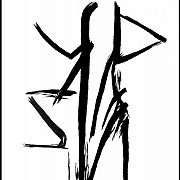MARCEL DUCHAMP'S "FOUNTAIN"

July 28, 1887 is the birthday of Marcel Duchamp. He was not only an artist, but also a well-known chess player, so in 1917 he performed a witty queen’s gambit: he brought his art object Fountain to Alfred Stieglitz’s studio, thereby defining the art scene of the new century. The gesture remained incomprehensible even to his peers, the Dadaists, who were used to strange antics, but this bold move has secured its author a place in art history textbooks.
For people not privy to the features of the artist’s heights of creative imagination, the object was not associated with a fountain, but with a urinal. But what does form mean compared to content?

The content was radically different: the fountain, unlike the urinal, does not collect liquid to send it to the dark depths of the city underground, but sprays it in all directions. Of course, the composition of the liquid in the fountain is completely different. The pathos of the innovation was softened by the inscription on the porcelain surface of the unusual fountain – the name of the author was written there: “R. Mutt”, which means “R. Fool”. Duchamp was, of course, smart, because he had figured out the golden rule: if you want to make a brand new statement in art, do everything the other way around, including in terms of describing yourself. By the way, he once wisely remarked that the best things in America are plumbing and bridges.
By the time Duchamp presented his Fountain to the confused public, the artist was 30 years old, and at that time he had been interested in art for half of his life. From a distant perspective of almost a hundred years later, at the beginning of the 21st century, more precisely in 2009, British experts called Fountain the main work of art of the 20th century. Evil tongues will not hesitate to point out, that century’s masterpiece reflects its zeitgeist. The creator of the work, of course, made fun of traditional art, which failed to protect the world from the horrors of the overwhelming war. But even modernism did not cope with the peacekeeping mission: in twenty years, an even more terrible war broke out in the world. The end of history was hastened to be announced only at the end of that century, in the era of postmodernism, and even then this statement definitely had not aged well.
By the way, Duchamp also played chess in a hypermodernism style. For sure, one cannot say he was inconsistent for sure.





















